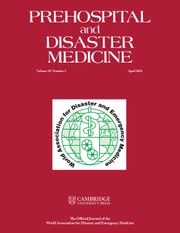No CrossRef data available.
Article contents
Assessing Intent: Repetitive Strikes on Ukrainian Health Care Facilities
Published online by Cambridge University Press: 02 April 2025
Abstract
Attacks on health care – which are potential war crimes – are increasingly observed in contemporary armed conflicts. The full-scale Russian invasion of Ukraine is no exception to this worrisome trend. War crime prosecutions of suspected deliberate attacks on health care facilities require proof that they were the intended target, which is extremely challenging. If health care facilities are attacked more than once, this may increase the likelihood of intent. The Ukrainian Healthcare Center (UHC) began documenting attacks on health infrastructure since the start of the full-scale Russian invasion of Ukraine. In this study, the aim was to assess repetitive attacks on Ukrainian health care facilities from February 24, 2022 through October 24, 2023.
The Berkeley Protocol on Digital Open Source Investigations was used to identify and document health care attacks. Data collection for this study included temporal factors, location and type of facility, attack and weapon type, the number of health care personnel and civilians killed and injured, and whether the afflicted facilities were damaged, destroyed, and/or repeatedly attacked.
During the study period, there were 397 attacks on 281 Ukrainian health care facilities, damaging 237 facilities and destroying another 44. Fifty-three facilities (18.9%) were attacked more than once (total: 163 attacks; mean 3.1; median 2; range 2-10 attacks), and 27.7% of all health care attacks (110/397) concerned repeat attacks. The median time between attacks was 18 days (range: 0-289 days).
From February 24, 2022 through October 24, 2023, one-in-five targeted health care facilities in Ukraine experienced repetitive attacks. Furthermore, one-in-four attacks on health care involved recurrent attacks. This observed pattern raises the possibility that health care facilities in Ukraine are being intentionally targeted.
- Type
- Innovation Report
- Information
- Copyright
- © The Author(s), 2025. Published by Cambridge University Press on behalf of World Association for Disaster and Emergency Medicine
Footnotes
Editor’s Note: Editor-in-Chief (EIC) Dr. Jeffrey Franc declares a minor conflict of interest (COI) in reviewing this manuscript. In instances where the EIC has a minor COI, the manuscript follows the standard review process but requires additional approval from an Editorial Board member before acceptance. Final approval for publication of this manuscript was given by Editorial Board member Dr. Tareg Bey.



